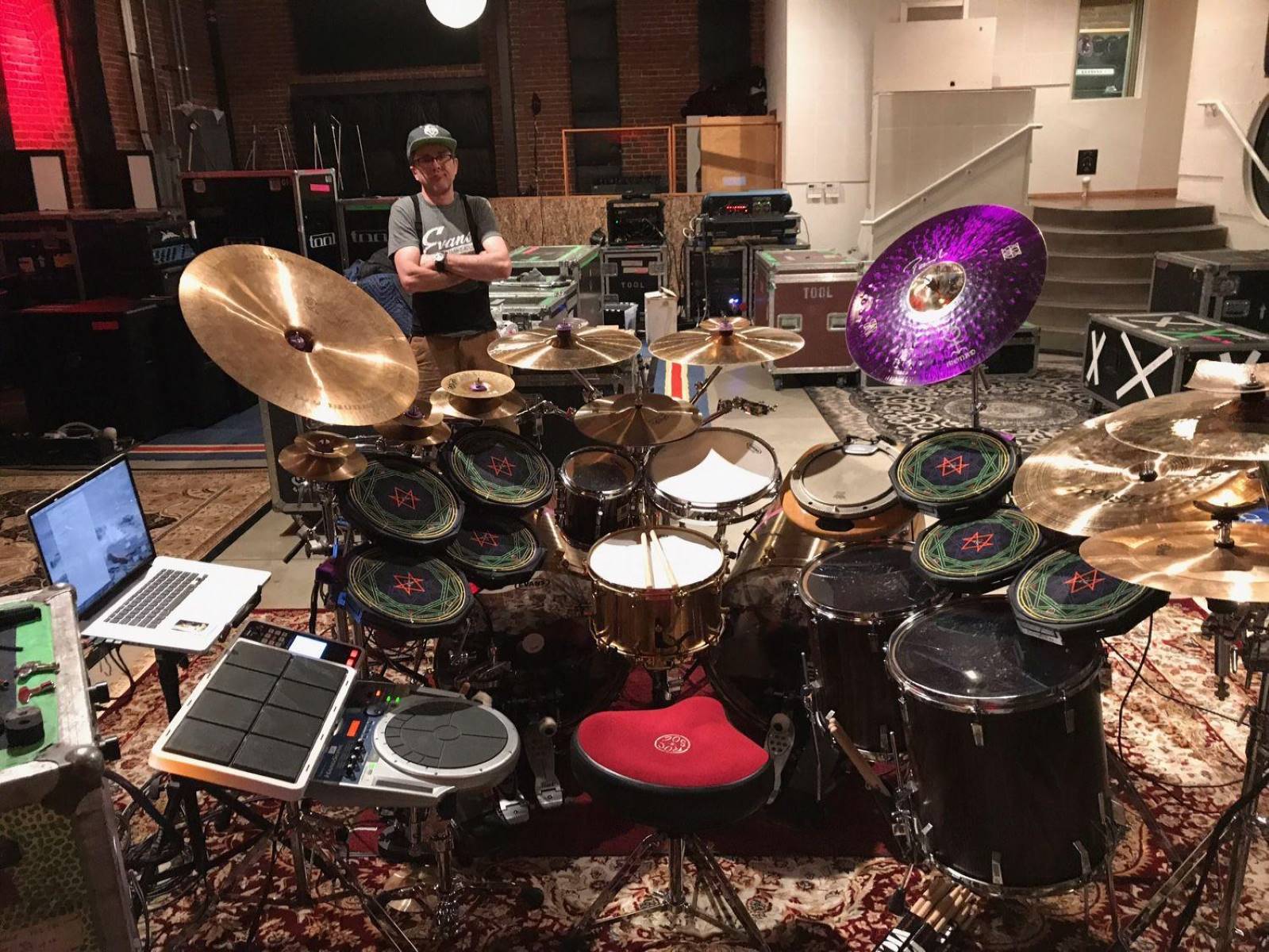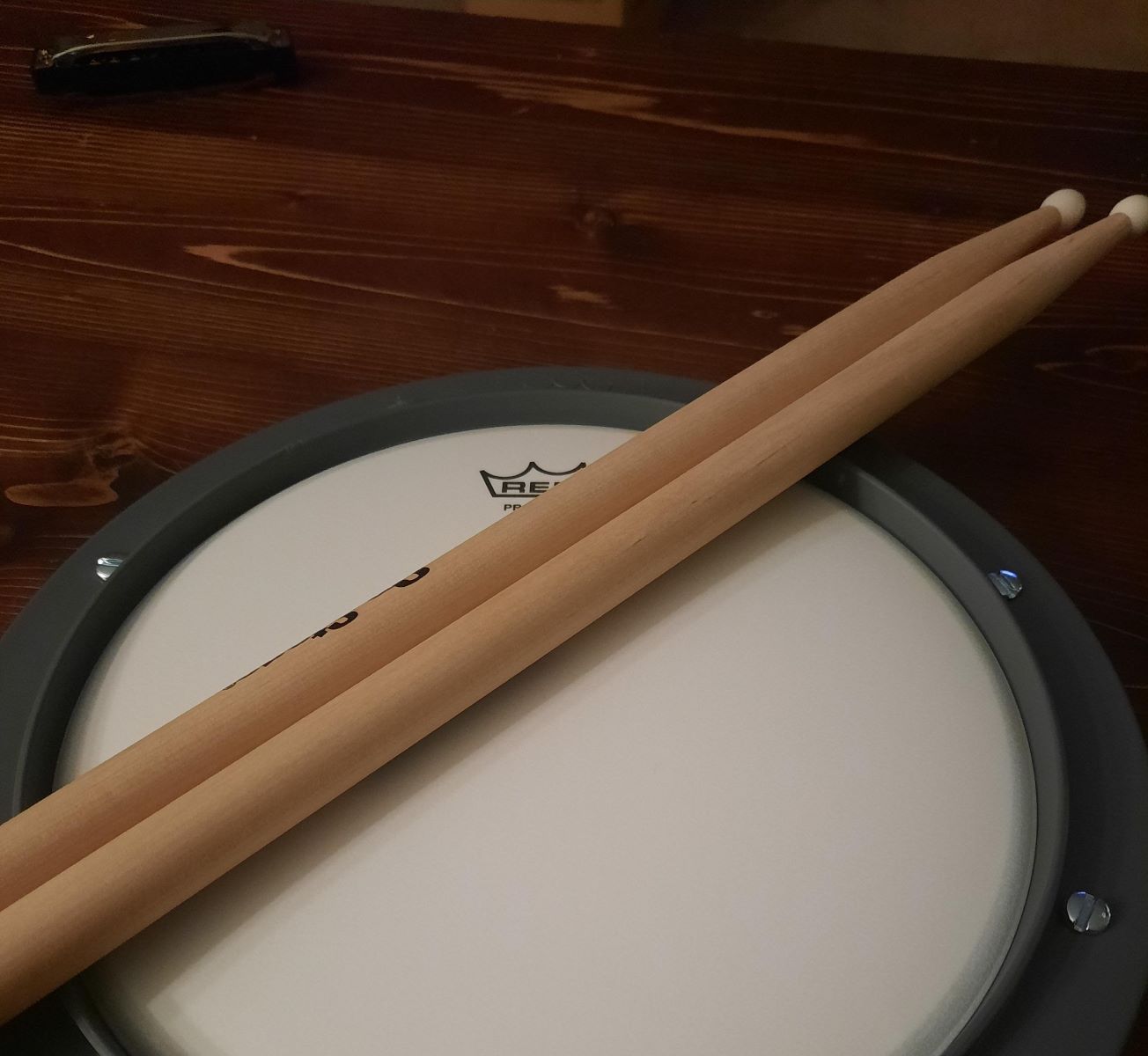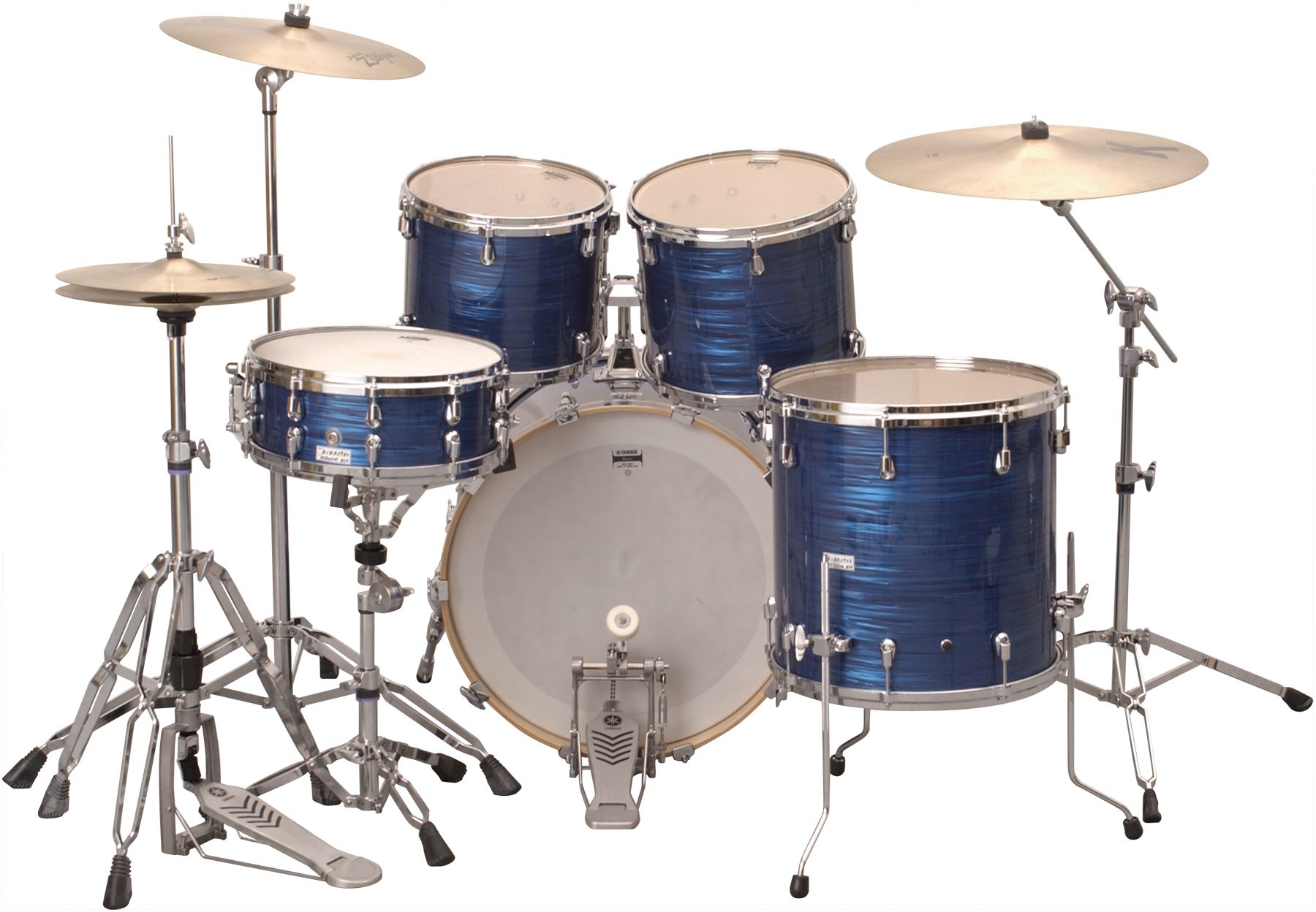Home>Instruments>Drums>How To Use Compression On Drums


Drums
How To Use Compression On Drums
Published: February 7, 2024
Learn how to use compression to enhance the impact and clarity of your drum tracks. Discover effective techniques for achieving a professional sound.
(Many of the links in this article redirect to a specific reviewed product. Your purchase of these products through affiliate links helps to generate commission for AudioLover.com, at no extra cost. Learn more)
Table of Contents
Introduction
Drums are the heartbeat of any music, providing rhythm, energy, and dynamics to a song. However, achieving the perfect drum sound can be a challenging task for many music producers and engineers. This is where the technique of compression comes into play. When used effectively, compression can significantly enhance the impact and clarity of drum tracks, allowing them to cut through the mix with power and precision.
In the world of audio engineering, compression is a fundamental tool used to control the dynamic range of sound. Dynamic range refers to the variance between the softest and loudest parts of an audio signal. By applying compression to drum tracks, you can ensure that the sound remains consistent and impactful throughout, regardless of the drummer's intensity or the natural fluctuations in volume.
In this comprehensive guide, we will delve into the art of using compression on drums, exploring the intricacies of this technique and providing practical tips for achieving professional-grade drum sounds. Whether you're a seasoned audio engineer or a budding music producer, mastering the skill of drum compression can elevate your productions to new heights.
Throughout this article, we will cover the fundamental principles of compression, the setup and configuration of a compressor for drum processing, and advanced techniques such as parallel compression. By the end, you will have a solid understanding of how to harness the power of compression to unlock the full potential of your drum tracks. So, let's dive in and explore the transformative world of drum compression!
Understanding Compression
Before delving into the specifics of using compression on drums, it’s essential to grasp the foundational concepts of compression and its impact on audio signals. At its core, compression is a dynamic signal processing technique that reduces the dynamic range of an audio signal. This means that the disparity between the loudest and softest parts of the sound is lessened, resulting in a more consistent and controlled output.
When applied to drum tracks, compression can serve several crucial purposes. Firstly, it helps to rein in the transients, or the initial sharp peaks of sound, produced by drum hits. By taming these transients, compression can prevent them from overpowering the mix and ensure that the drums sit well within the overall sonic landscape. Additionally, compression can add sustain to the drum hits, making them sound fuller and more impactful.
Understanding the key parameters of a compressor is vital for effectively utilizing this tool on drum tracks. The threshold determines the level at which the compressor starts to engage, while the ratio controls the amount of gain reduction applied once the signal surpasses the threshold. Attack and release settings dictate how quickly the compressor responds to incoming signals and how long it takes for the gain reduction to return to normal, respectively.
Furthermore, it’s important to recognize the distinction between peak and RMS (Root Mean Square) compression. Peak compression focuses on attenuating the highest peaks in the signal, whereas RMS compression considers the average level of the audio, resulting in a more subtle and natural-sounding compression effect.
By comprehending these fundamental aspects of compression, you can begin to harness its potential to shape the dynamics and impact of drum tracks. The next step is to explore the practical application of compression on drums, which involves configuring the compressor settings to achieve the desired sonic results.
Setting Up Your Compressor
When using compression on drums, the initial setup of your compressor is critical in determining the overall impact and character of the processed drum sound. To begin, it’s essential to consider the type of compressor you are using, as different models offer varying features and sonic characteristics.
Before diving into specific settings, it’s important to assess the dynamic range of the drum tracks and identify the areas that require compression. Soloing the drum tracks and listening for excessive transients or inconsistent volume levels can provide valuable insights into where compression is needed.
Once you’ve identified the sections that could benefit from compression, it’s time to set the threshold and ratio parameters on the compressor. The threshold determines the point at which the compressor begins to attenuate the signal, while the ratio controls the amount of gain reduction applied once the signal exceeds the threshold.
For drum tracks, a moderate ratio in the range of 4:1 to 6:1 is a good starting point for achieving a balanced and controlled sound. Setting the threshold at a level where it captures the peaks without overly compressing the entire signal is crucial. It’s advisable to adjust the threshold and ratio settings while monitoring the drum tracks within the context of the full mix, ensuring that the compression enhances the overall impact without compromising the natural dynamics.
Additionally, the attack and release parameters play a pivotal role in shaping the behavior of the compressor. A faster attack time can help tame sharp transients, while a slower release time can impart a sense of sustain and body to the drum hits. Experimenting with these settings and listening attentively to the changes in the drum sound is key to finding the optimal configuration for your specific mix.
Furthermore, some compressors offer a knee control, which determines the onset of compression as the signal approaches the threshold. A hard knee setting results in a more abrupt and noticeable compression effect, whereas a soft knee provides a smoother and more gradual transition into compression, often yielding a more transparent sound.
By carefully setting up your compressor to address the unique characteristics of your drum tracks, you can lay the groundwork for achieving a cohesive and impactful drum sound that seamlessly integrates into your mix.
Applying Compression to Drums
Once the compressor is configured to suit the specific dynamics of the drum tracks, it’s time to apply compression in a manner that enhances the overall impact and cohesiveness of the drums within the context of the mix. When compressing drums, it’s crucial to strike a balance between controlling the dynamic range and preserving the natural feel and energy of the performance.
One approach to applying compression to drums is to focus on the kick and snare, which are typically the driving forces behind the rhythm and groove of a song. By individually compressing the kick and snare tracks, you can tailor the dynamics of these crucial elements to ensure they cut through the mix with clarity and power.
For the kick drum, moderate compression with a relatively fast attack time can help rein in the initial transient and provide a consistent low-end punch. By dialing in the appropriate threshold and ratio settings, you can ensure that the kick drum maintains a solid and defined presence throughout the song, anchoring the rhythm with authority.
Similarly, the snare drum can benefit from targeted compression to accentuate its impact and sustain. Adjusting the compressor settings to control the snare’s transient attack and sustain can result in a more pronounced and energetic snare sound that drives the groove and adds excitement to the mix.
When compressing the overall drum bus, it’s important to consider the collective dynamics of the entire drum kit. Applying a subtle amount of compression to the drum bus can help glue the individual elements together, creating a cohesive and unified drum sound that sits well within the mix. Carefully monitoring the effect of the bus compression on the drum kit’s balance and energy is crucial to achieving a polished and professional result.
Moreover, experimenting with parallel compression, also known as New York compression, can yield compelling results when processing drums. By blending a heavily compressed signal with the dry, uncompressed signal, parallel compression can impart weight and impact to the drums while retaining the natural dynamics and transient detail. This technique can be particularly effective in adding depth and energy to the drum mix, enhancing the overall excitement and intensity of the rhythm section.
By thoughtfully applying compression to individual drum elements and the drum bus, you can sculpt a dynamic and cohesive drum sound that elevates the impact and energy of your music productions. The next step involves refining the compression settings to fine-tune the responsiveness and character of the compressed drum tracks.
Adjusting Attack and Release
When fine-tuning the compression settings for drum tracks, the parameters of attack and release play a pivotal role in shaping the transient response and sustain of the processed sound. Understanding how to adjust the attack and release settings on a compressor is essential for tailoring the dynamics and character of the drums to suit the requirements of a specific mix.
The attack parameter dictates how quickly the compressor responds to incoming signals, particularly the initial transients of drum hits. A faster attack time can effectively control the sharp peaks of the drum sound, ensuring that they are contained and do not overwhelm the mix. This is particularly beneficial for taming the initial impact of kick and snare drums, allowing them to cut through the mix with clarity and definition.
Conversely, a slower attack time can allow more of the transient to pass through before the compressor engages, resulting in a more open and dynamic sound. This can be advantageous for preserving the natural feel and energy of the drum performance, especially in genres where the raw and expressive nature of the drums is a defining characteristic.
When adjusting the release parameter, it’s important to consider how long it takes for the gain reduction to return to normal after the transient has passed. A shorter release time can impart a tighter and more controlled feel to the drum hits, particularly in fast-paced and aggressive musical contexts. On the other hand, a longer release time can enhance the sustain and body of the drum sound, adding a sense of weight and impact to the overall rhythm section.
Experimenting with different attack and release settings while listening to the drum tracks within the context of the full mix is crucial for finding the optimal balance between control and natural dynamics. It’s advisable to make incremental adjustments to these parameters, carefully evaluating the impact on the drum sound and ensuring that the compression enhances the overall musicality and impact of the mix.
Furthermore, considering the interplay between attack, release, and the ratio setting is essential for achieving a cohesive and balanced compression effect. A faster attack time may necessitate a longer release time to ensure that the gain reduction smoothly returns to normal, while a slower attack time might pair well with a shorter release time to maintain the transient detail and energy of the drums.
By honing your understanding of how attack and release settings influence the behavior of a compressor, you can effectively shape the dynamics and impact of drum tracks, ultimately contributing to a polished and professional drum sound that elevates the quality of your music productions.
Using Parallel Compression
Parallel compression, also known as New York compression, is a powerful technique that can significantly enhance the impact and energy of drum tracks. This approach involves blending a heavily compressed version of the drum signal with the dry, uncompressed signal, resulting in a sound that retains the natural dynamics and transient detail while also benefiting from added weight and intensity.
The process of implementing parallel compression begins by duplicating the original drum tracks to create a separate parallel compression channel. On this duplicated channel, a compressor is applied with aggressive settings, typically featuring a high ratio and substantial gain reduction. The goal is to heavily compress the signal, bringing out the nuances and subtleties of the drum performance while imparting a sense of power and presence.
Once the heavily compressed signal is generated, it is blended with the dry, uncompressed drum tracks to achieve the desired balance of impact and dynamics. This blending can be accomplished using the fader controls on the parallel compression channel, allowing for precise adjustment of the intensity of the compressed signal in relation to the original drum tracks.
One of the key advantages of parallel compression is its ability to add weight and energy to the drum mix without sacrificing the natural feel and expressiveness of the original performance. By blending the heavily compressed signal with the dry signal, the drums can maintain their dynamic range and transient detail while benefiting from the added punch and intensity brought about by the compression.
Moreover, parallel compression allows for greater control over the overall drum sound, empowering the producer or engineer to sculpt the impact and character of the drums to suit the requirements of a specific mix. This technique is particularly effective in genres where a powerful and energetic drum sound is essential, such as rock, pop, and electronic music.
When utilizing parallel compression, it’s important to monitor the effect of the compressed signal within the context of the full mix, ensuring that it enhances the overall energy and impact of the drums without overshadowing other elements. Careful adjustment of the blend between the compressed and dry signals is crucial for achieving a cohesive and balanced drum sound that elevates the intensity and excitement of the music.
By incorporating parallel compression into your drum processing workflow, you can unleash the full potential of the drum tracks, adding depth, power, and impact to your music productions while preserving the natural dynamics and energy of the original performance.
Conclusion
Mastering the art of using compression on drums is a transformative journey that can elevate the impact and energy of your music productions. By understanding the fundamental principles of compression and its application to drum tracks, you can shape the dynamics and character of the drums to suit the requirements of a specific mix, ultimately contributing to a polished and professional sound.
Throughout this comprehensive guide, we’ve explored the essential aspects of drum compression, from understanding the foundational concepts of compression to setting up the compressor for optimal performance. We’ve delved into the practical application of compression on drums, highlighting the significance of balancing control and natural dynamics to achieve a cohesive and impactful drum sound.
Adjusting attack and release settings has been underscored as a crucial step in tailoring the transient response and sustain of the processed drum tracks, allowing for precise control over the dynamics and character of the drums within the mix. Additionally, the utilization of parallel compression has been showcased as a powerful technique for adding weight and intensity to drum tracks while preserving their natural expressiveness and energy.
As you continue to refine your skills in drum compression, it’s essential to approach the process with a discerning ear and a willingness to experiment. Each mix presents unique challenges and opportunities, and through attentive listening and thoughtful application of compression techniques, you can achieve a drum sound that enhances the overall impact and excitement of your music.
Ultimately, the art of using compression on drums is a dynamic and creative endeavor that empowers you to shape the rhythmic foundation of your music with precision and artistry. By honing your understanding of compression techniques and their application to drum tracks, you can unlock the full potential of the drums, infusing your productions with energy, depth, and a compelling sonic presence.
So, embrace the transformative power of drum compression, and let your rhythmic arrangements soar to new heights, guided by the nuanced artistry of compression.











